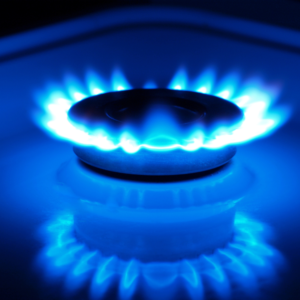It’s time to panic, says Prince Charles, the heir to the British throne.
The British royal fears that climate change could threaten our very existence unless the international community develops a sweeping plan to slash carbon-dioxide emissions. He recently warned, “the next 18 months will decide our ability to keep climate change to survivable levels.”
Stateside, calls for a Green New Deal, premised on a looming climate crisis, have turned one of America’s two major political parties against all fossil fuels, even natural gas.
But Democrats fail to mention that economic freedom, human ingenuity and affordable energy have done much to minimize the adverse effects of weather extremes and climate change. Climate-related deaths, in fact, have fallen 95 percent globally in the last century.
And the United States has curbed carbon emissions by scaling up our reliance on natural gas. Global carbon-dioxide emissions have risen 50 percent in the last 30 years, but U.S. emissions hover near 30-year lows.
America’s transition from coal to natural gas is relatively recent. In the mid-2000s, breakthroughs in horizontal drilling and hydraulic fracturing technologies led to a surge in natural gas production looking for markets. By 2009, the United States became the world’s top producer.
Power plants began relying on this abundant, cheap, environmentally preferred gas. When burned, coal releases lots of carbon dioxide, as well as harmful pollutants, into the air. Coal generated just a quarter of our nation’s electricity last year but accounted for more than 65 percent of power plant emissions.
The amount of natural gas consumed by power plants rose 77 percent from 2005 to 2016 — and carbon emissions dropped almost 25 percent. If not for natural gas, carbon emissions would have been an estimated 15 percent higher last year.
Natural gas companies are constantly finding ways to cut emissions even further. Better technologies and protocols have reduced methane, a greenhouse gas emitted during oil and natural gas production, almost 19 percent from 1990 to 2015. During the same period, U.S. natural gas production rose by more than 50 percent.
In the last year, a partnership of 65 energy firms inspected more than 56 million parts on oil and gas operations across 78,000 sites for potential methane leaks. They found that less than 1 percent of these components were leaking — and fixed 99 percent of them within 60 days.
Climate activists should also realize that since 2005, natural gas has been responsible for more carbon emission reduction than from renewables combined, according to a report from the U.S. Energy Information Administration.
Fossil fuels supply more than 60 percent of our nation’s electricity. Renewables combined generate just 17 percent of America’s power — with wind at less than 7 percent and solar a mere 1.6 percent. And these numbers will fall if lucrative tax subsidies for wind and solar are eliminated as scheduled.
Our country’s growing energy needs require continued reliance on fossil fuels. Replacing natural gas and coal would require 11 times more wind and solar capacity and 900 times more energy storage than currently available. We would also need hundreds of thousand miles of new infrastructure to transport energy to towns and cities.
Even if it were physically possible to build and install such infrastructure in a short time frame — and it’s not — the cost would be prohibitive. The Green New Deal, a sweeping plan to eliminate fossil fuels, could drive up the typical American’s household energy bills by as much as $2,000 each year.
The war on fossil fuels has blinded hard-core environmentalists from reasonable strategies that would keep energy affordable and the rural landscape pristine. It’s time for climate activists to get realistic about energy.

